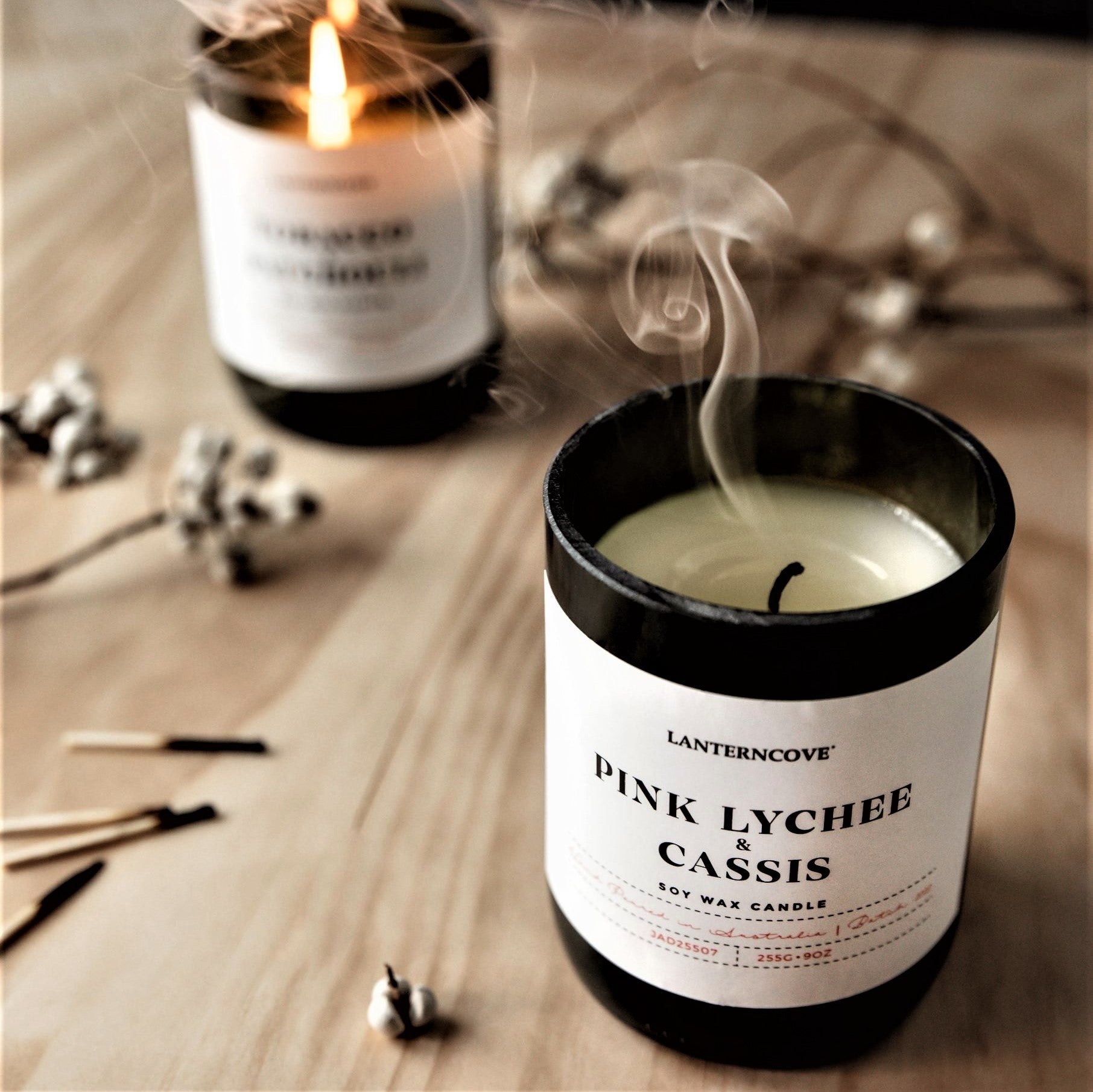Produce Atmosphere with Handcrafted Soy Wax Candles and Home Fragrance
Produce Atmosphere with Handcrafted Soy Wax Candles and Home Fragrance
Blog Article
From Wick to Wax: Recognizing the Chemistry Behind Soy Wax Candles and Their Environmental Effect
As we illuminate our areas with the warm radiance of candles, there exists a world of detailed chemistry behind the seemingly simple act of lighting a soy wax candle. The choice in between soy and paraffin wax prolongs past plain looks, delving into the realm of environmental influence and the really make-up of the products. Understanding the molecular structure of soy wax and its combustion procedure clarifies the emissions released right into our environments. Join us as we untangle the clinical intricacies behind soy wax candles and discover their effects on our environment.
Soy Wax Vs. Paraffin Wax
When comparing soy wax and paraffin wax for candle making, it is vital to comprehend the distinct qualities and advantages of each product. Soy wax is an all-natural, eco-friendly resource stemmed from soybean oil, making it environmentally friendly and naturally degradable - soy wax candles. In contrast, paraffin wax is a by-product of petroleum refining, which raises issues regarding its ecological effect and sustainability
Soy wax candles melt cleaner and release much less residue contrasted to paraffin wax candles, making them a healthier selection for interior air top quality. In addition, soy wax has a reduced melting point, enabling a longer-lasting candle that disperses fragrance more effectively. Paraffin wax, on the various other hand, often tends to melt faster and much less cleanly, potentially launching unsafe chemicals right into the air.
From a sustainability perspective, soy wax is preferred for its biodegradability and sustainable sourcing, lining up with the expanding consumer choice for eco conscious products. While paraffin wax has been a conventional choice in candle light making because of its price and simplicity of use, the shift towards eco-friendly choices like soy wax is getting momentum in the market.
Chemical Structure of Soy Wax

Combustion Process in Soy Candles
The chemical composition of soy wax straight affects the combustion process in soy candles, influencing variables such as shed time, scent release, and ecological effect. When a soy candle is lit, the warmth from the fire melts the wax near the wick. This fluid wax is after that attracted up the wick due to capillary activity. As the fluid wax reaches the flame, it evaporates and goes through combustion. The combustion procedure involves the vaporized hydrocarbons in the wax responding with oxygen in the air to produce warmth, light, water vapor, and carbon dioxide.
The combustion performance of soy candles is affected by the purity of the soy wax and the high quality of the wick. A clean-burning soy candle with a correctly sized wick will certainly minimize and create a steady flame residue formation. This not only expands the burn time of the candle light but likewise boosts the release of fragrances. In addition, soy wax candles have a reduced environmental effect contrasted to paraffin candles because of their renewable and eco-friendly nature.

Environmental Benefits of Soy Wax

Thought about a lasting option to standard paraffin wax, soy wax provides noteworthy environmental benefits that make it a preferred selection amongst eco-conscious customers. One considerable advantage of soy wax is its sustainable sourcing. Soy wax is stemmed from soybean oil, which is primarily cultivated in the United States. The farming of soybeans aids sustain regional farmers and reduces the dependence on non-renewable nonrenewable fuel sources utilized in paraffin wax production. Additionally, soy about his wax is biodegradable, meaning it breaks down normally without releasing harmful toxins right into the atmosphere. This characteristic makes soy wax candle lights a much more eco-friendly alternative compared to paraffin wax candle lights, which are made from oil, a non-renewable resource. Soy wax burns cleaner and produces much less soot than paraffin wax, adding to better interior air high quality and lowering the requirement for cleaning and upkeep. Generally, the ecological benefits of soy wax straighten with the growing need for sustainable and environmentally friendly items out there.
Recycling and Disposal Factors To Consider
Reusing and appropriate disposal of soy wax candle lights play a vital duty in maintaining environmental sustainability and minimizing waste in communities and homes. The initial action is to ensure that the candle has burned completely when it comes to recycling soy wax candles. This can be achieved by allowing the candle to burn until the wick is no longer useful, and afterwards allowing the continuing to be wax cool and strengthen. As soon as the wax has actually strengthened, it can be very carefully eliminated from the container.

In regards to disposal, if recycling is not an alternative, soy wax candle lights are eco-friendly and can be safely disposed of in a lot of check this site out household waste systems. However, it is constantly recommended to consult neighborhood reusing facilities or waste monitoring services for certain standards on candle disposal to make sure correct handling and environmental protection.
Conclusion
In verdict, the chemistry behind soy wax candles exposes their ecological benefits over paraffin wax candle lights. Soy wax, stemmed from soybean oil, burns cleaner and generates less residue when contrasted to paraffin wax. The burning process in soy candle lights is more reliable, resulting in a much longer and a lot more also melt. Additionally, soy wax is renewable and biodegradable, making it an extra lasting choice for candle production. Recycling and correct disposal of soy wax candles better add to their ecological influence.
When comparing soy wax and paraffin wax for candle making, it is essential to understand the distinct features and advantages of each product (candles).Soy wax candles shed cleaner and give off much less residue contrasted to paraffin wax candles, making them a much healthier option for interior air quality.Considered a lasting alternative to conventional paraffin wax, soy wax uses notable ecological advantages that make it you could try these out a prominent option amongst eco-conscious customers. Soy wax burns cleaner and produces much less residue than paraffin wax, adding to far better interior air top quality and reducing the need for cleansing and upkeep.In final thought, the chemistry behind soy wax candles discloses their ecological benefits over paraffin wax candle lights
Report this page